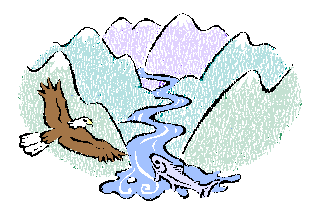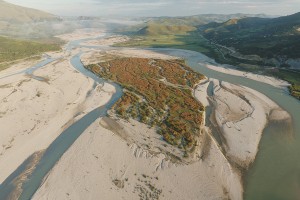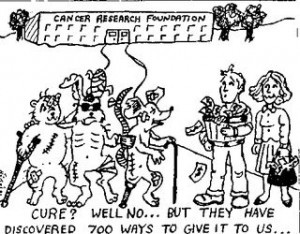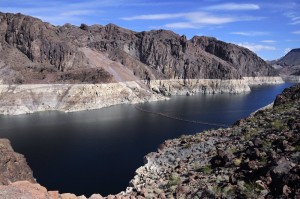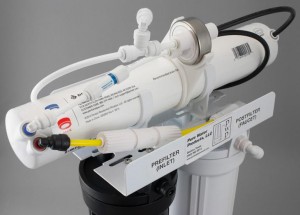The Pure Water Occasional for September 30, 2016
In this early Fall Occasional, you'll learn which shower filter makes you sing better, what a developing country cannot be, what is the MCL for potato chips, which countries have water infrastructure superior to that of the US, which famous lake has a bathtub ring, and what was found in the McMillan Reservoir. Meet Kelly Reynolds, Ralph Nader, Joan Rose and Damian Gjiknuri. Hear about microbes, triclocaraban, Chromium 6, biofilm, THMs, HAAs, DPBs, TFMs and Coca Cola. Learn about the 8-year boil water advisory at "Bay of Quinte" Mohawks, the final barrier, the standoff by the Standing Rock Water Protectors, illegal cesspools in HI, toilet reefs in New York, plus the controversy over the Vjosë River. And, as always, there is much, much more.
The Pure Water Occasional is a project of Pure Water Products and the Pure Water Gazette.
To read this issue on the Pure Water Gazette's website, please go here. (Recommended! When you read online you get the added advantage of the Gazette's sidebar feed of the very latest world water news.)
”Sprite Shower Filters: You’ll Sing Better!”
We'll start this issue with a perceptive article by an author familiar to the water treatment industry, Dr. Kelly Reynolds of the University of Arizona. Kelly writes frequently on public health issues relating to water and the microbial aspects of water treatment. She is very skillful at presenting technical issues in a way that can be understood by those, like me, who are less technically prepared. The article below challenges our misconceptions about the superiority of US public water delivery infrastructure as compared with that of many other countries. -- Gene Franks.
Eliminating Chlorine Residuals from Tap Water
By Kelly A. Reynolds, MSPH, PhD
Drinking water from the tap is not sterile but is regulated to a level of acceptable risk so that infections from microbial exposures and illnesses from chemicals occur at very low levels. In the US, acceptable risk goals are set at one infection per 10,000 persons per year for microbes and as low as one in a million cases of cancer from chemicals, including added disinfectants. The question is how to ensure the safety of drinking water considering that common water treatment protocols inherently create additional health risks. Recent studies compare differences among various countries in water quality management, while exploring whether or not carcinogenic chlorine residuals can be safely excluded from municipal tap water supplies.
Water treatment in developed countries
Microbial contamination of drinking water post-treatment is a major concern for municipalities. The US has relied on a multi-barrier approach to drinking-water treatment, so that the chain of treatment applications can make up for any upstream deficiencies. Following source protection and municipal treatment, the final step in US water treatment is secure distribution to consumer taps. Ideally this is accomplished with clean, contained distribution piping. Unfortunately, the US distribution system is aged, leaky and plagued with biofilm formation, offering nutrients and protection to harmless and harmful microbes alike. Thus, the addition of a disinfectant residual within the distribution system is standard protocol.
Worldwide, many countries (including the US and the UK) require municipalities to add disinfectants such as chlorine or chloramine to the distribution system. This action creates the need to manage DBPs via rapid circulation in the system or water storage practices to minimize stagnant water zones where disinfectants are further added to retard microbial growth.
Other countries (including the Netherlands, Switzerland, Austria and Germany) do not rely on disinfectant residuals in the distribution system. But how can these countries ensure safe drinking water at the tap without using this common final barrier? The answer to this question lies in the system engineering that is designed to provide more advanced water treatment pre-distribution, effectively reducing biodegradable compounds and biofilm production. A reduced biofilm means reduced microbial growth and pathogen survival in the pipes. In countries that do not use residual disinfectants, distribution infrastructure is well-maintained and managed to utilize smaller pipes, rapid circulation and proactive flushing, combined with monitoring and rapid repair practices.
Worldwide, many countries (including the US and the UK) require municipalities to add disinfectants such as chlorine or chloramine to the distribution system. This action creates the need to manage DBPs via rapid circulation in the system or water storage practices to minimize stagnant water zones where disinfectants are further added to retard microbial growth.
Other countries (including the Netherlands, Switzerland, Austria and Germany) do not rely on disinfectant residuals in the distribution system. But how can these countries ensure safe drinking water at the tap without using this common final barrier? The answer to this question lies in the system engineering that is designed to provide more advanced water treatment pre-distribution, effectively reducing biodegradable compounds and biofilm production. A reduced biofilm means reduced microbial growth and pathogen survival in the pipes. In countries that do not use residual disinfectants, distribution infrastructure is well-maintained and managed to utilize smaller pipes, rapid circulation and proactive flushing, combined with monitoring and rapid repair practices.
Pros and cons of the chlorine residual
Disinfection of water with chlorine has been touted as one of the greatest public-health interventions of the century, preventing epidemic waterborne outbreaks such as cholera, typhoid and dysentery. Water disinfection, however, impacts the sustained microbial population (i.e., the system’s microbiome) and general water chemistry, resulting in both positive and negative changes relative to water quality and safety.
DBPs are created during the production of drinking water when chemicals such as chlorine, ozone, chloramines, etc. react with natural organic materials, bromide, iodide and other manmade compounds. The resulting products (more than 600 identified), including THMs and HAAs, are toxic to humans and animals and have been reported in drinking-water systems worldwide.
DBPs are created during the production of drinking water when chemicals such as chlorine, ozone, chloramines, etc. react with natural organic materials, bromide, iodide and other manmade compounds. The resulting products (more than 600 identified), including THMs and HAAs, are toxic to humans and animals and have been reported in drinking-water systems worldwide.
Corrosion and adverse taste are other undesirable byproducts of chlorine residuals in tap water. Although little information exists on the potential toxicity of DBPs in drinking water, exposures have been linked to a variety of health issues, including liver, kidney and central nervous system problems. Epidemiological studies have associated lifetime exposure to chlorinated water with increased risk of bladder and colorectal cancers.(1) The trade-off of not using disinfectant residuals, however, could mean an increased risk of exposure to microbial pathogens.
Contamination in the distribution system occurs due to breaks, leaks, cross-connections, pressure differentials and other events leading to intrusion of hazardous microbes and chemicals.(2) At least 20 percent of distribution mains are reported to be below the water table and all systems have submerged pipes at some time throughout the year which provides additional opportunity for intrusion of exterior water under low- or negative-pressure conditions. Negative hydraulic pressure can draw pathogens from the surrounding environment into the water supply where residual disinfection efficacy is uncertain and variable due to changes in water age, residence time, flow velocity, etc. Outbreaks occur following external contamination in the distribution system despite the presence or requirement of residual disinfectant. Research suggests that typical residual chlorine levels (0.5 mg/L) do not provide significant inactivation of all pathogens during intrusion events, especially protozoan and viral pathogens.(3)
Contamination in the distribution system occurs due to breaks, leaks, cross-connections, pressure differentials and other events leading to intrusion of hazardous microbes and chemicals.(2) At least 20 percent of distribution mains are reported to be below the water table and all systems have submerged pipes at some time throughout the year which provides additional opportunity for intrusion of exterior water under low- or negative-pressure conditions. Negative hydraulic pressure can draw pathogens from the surrounding environment into the water supply where residual disinfection efficacy is uncertain and variable due to changes in water age, residence time, flow velocity, etc. Outbreaks occur following external contamination in the distribution system despite the presence or requirement of residual disinfectant. Research suggests that typical residual chlorine levels (0.5 mg/L) do not provide significant inactivation of all pathogens during intrusion events, especially protozoan and viral pathogens.(3)
Can the US eliminate a chlorine residual in tap water?
Numerous studies suggest that the presence of chlorine residual does little to prevent waterborne outbreaks. A comparison of use/non-use of chlorine residual further indicates that systems with a residual disinfectant do not necessarily have fewer outbreaks.(4) Elimination of a chlorine residual in the US is unlikely given the significant lack of investment in infrastructure maintenance. Compared to the Netherlands, which has recently replaced much of its distribution piping, the US distribution system is decades older and in dire need of repair. While researchers conclude that delivery of water with the same safety level is possible and that the US should move toward a disinfectant residual-free system, a whole new set of safeguards must first be in place. Such modifications will substantially drive up the cost of drinking water, a consequence other countries have accepted, given that water costs two to three times more in western Europe.(2)
Conclusions
The US is far from reaching a residual-free tap water supply. The trade-off of not adding chlorine and risking the consequences of acute microbial illness is currently not beneficial. Therefore, consumers should consider the benefits of keeping chlorine residuals in tap water but controlling exposures to harmful contaminants at the tap. The most widely applied POU water treatment for DBP removal is activated carbon filtration. NSF-certified POU devices are required to remove 95 percent of a 300 µg/L chloroform influent challenge concentration, resulting in a 15-µg/L maximum effluent concentration. In the US and countries with similar treatment design, POU devices offer the best available treatment at the tap to mitigate DBP exposures, particularly given system variability and the uncertainties of future municipal treatment modifications.
References
(1) World Health Organization. IARC monographs on the evaluation of carcinogenic risks to humans. (2014).
(2) Rosario-Ortiz, F. et al. How do you like your tap water? Science, 351, 912–4 (2016).
(3) Reynolds, K.A.; Mena, K.D. and Gerba, C.P. Risk of waterborne illness via drinking water in the United States. Rev. Environ. Contam. Toxicol. 192, 117–58 (2008).
(4) Rosario-Ortiz, F. and Speight, V. Can drinking water be delivered with-out disinfectants likechlorine and still be safe? The Conversation (2016). atChlorine
Available as a gas, as a liquid in sodium, hypochlorite, or as a solid in calcium hypochlorite, chlorine is widely used in the disinfection of water and as an oxidizing agent for organic matter, iron, hydrogen sulfide, etc. It is. Chlorine reacts with organics in water to form trihalomethanes (THM) that can cause cancer." href="http://www.wcponline.com/glossary/chlorine/" style="box-sizing:border-box;transition:all 0.1s ease-in-out;color:rgb(0, 0, 0) !important;text-decoration:none !important;border-bottom:1px dotted rgb(0, 0, 0) !important;">chlorine-and-still-be-safe-55476>(2) Rosario-Ortiz, F. et al. How do you like your tap water? Science, 351, 912–4 (2016).
(3) Reynolds, K.A.; Mena, K.D. and Gerba, C.P. Risk of waterborne illness via drinking water in the United States. Rev. Environ. Contam. Toxicol. 192, 117–58 (2008).
(4) Rosario-Ortiz, F. and Speight, V. Can drinking water be delivered with-out disinfectants likechlorine and still be safe? The Conversation (2016). at
![occasionalbanner300[1]](https://ymlp.com/https.php?id=purewatergazette.net/blog/wp-content/uploads/2013/04/occasionalbanner3001.gif)
